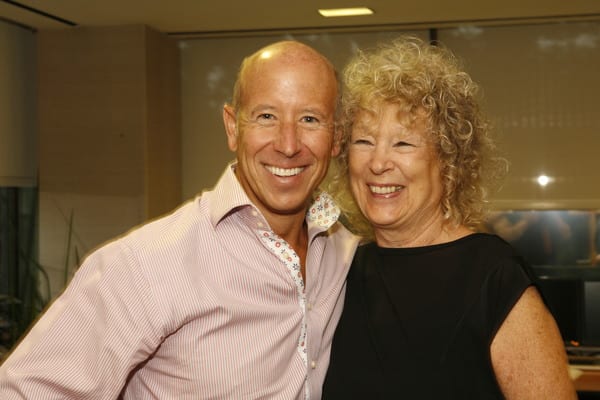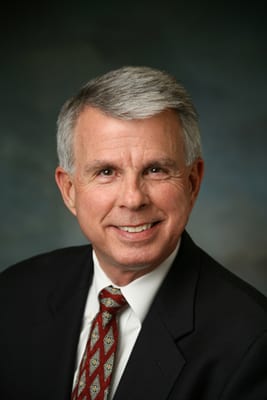 On a rainy spring morning, Clodagh met with Barry Sternlicht, founder, chairman, and CEO of Starwood Capital Group at his spacious and art-filled Greenwich, Connecticut, office. The two worked together several years ago on the W Fort Lauderdale, and today engaged in a warm, freewheeling conversation that encompassed his creation of the W brand, his forthcoming Baccarat hotel, and their shared predilection for “sleeping around.”
On a rainy spring morning, Clodagh met with Barry Sternlicht, founder, chairman, and CEO of Starwood Capital Group at his spacious and art-filled Greenwich, Connecticut, office. The two worked together several years ago on the W Fort Lauderdale, and today engaged in a warm, freewheeling conversation that encompassed his creation of the W brand, his forthcoming Baccarat hotel, and their shared predilection for “sleeping around.”
Who designed your house?
My wife and I. When I was creating W or what we’re doing now, the 1 or Baccarat Hotels, I know exactly what I want. But in my own house I don’t know how to raise the bar to a level of design that I’m [accustomed to].
You’re your own worst client.
Yeah, nothing will ever be good enough. At least a commercial space has a beginning and an end. I think that great interior designers are like physical equivalents to the great painters. Architecture is an aesthetic thing for your eyes, but the interiors are for you as a person. Great design just feels right.
It’s like Alain de Botton says in The Architecture of Happiness, that people really don’t fully understand the impact an interior of a building can have on your wellness.
If you look at the W designers we used, most of them came from retail where they had to create a brand and vision in a very small space. And they had to create and be in tune with the brand vision. W had to look like a W.
That’s one of the things I found interesting about your Ws, that you used different designers for every hotel but you delivered the same experience: the W service, the W emphasis on good food.
We evolved. We learned as we went. And yes, the DNA of the brand was good design and service. We started with W New York in 1998. It had 700 rooms. Who ever heard of a 700-room boutique? Our goal was never to be a 5-Star or even 4-Star hotel. We were just trying to compete against Marriott. People began to expect a lot more of W. So then we had to begin to match their expectations.
How do you think the brand has evolved since you were in charge?
I’m very proud of W. When I see the W Doha or the W Istanbul, it’s like I’ve had all these children. The kids are growing up without me. I won’t say anything negative, but I think 
the company [Starwood Hotels] has to be very careful about brand creep. When you have 
multiple brands, everybody covets the things that work for everybody else. We put candles and scents in W. The Sheraton customer shouldn’t have W’s candle. If you lose your individuality, then you lose your pricing power, your brand, and your loyalty to the customer.
In retail, you’ve got Ralph Lauren. He has his Black Label and his Purple Label and he doesn’t mix. He’s not appealing to every single American; he’s appealing to people that want that style. So I think that was really what we tried to do with W. And when I heard that Bill Marriott said it was a fad, I thought, ‘Good, you should believe that.’Because what we did with W wasn’t for everyone.
What’s really interesting to me is that design has definitely become far more important in all real estate, but definitely in the hotel business. Hotel guys used to have their wives do the interiors! I loved people asking me, ‘Why are you picking fabrics?’I’m thinking, ‘It’s my product. This is my product.’
You would actually pick up a fabric and say, ‘Would that wear?’And you looked at the rub test on the back.
We actually broke a lot of rules. W was the laboratory for lots of things.

I attended one of your lectures at the International Design Conference in Aspen. And you said, ‘The key to success in life is, find the freight trains in your life and get on them instead of in front of them.’And I came up with this image of you with the fast-forward button stuck. If I offered you a day of total luxury, what would that consist of?
I’d probably go lie on the beach in the Caribbean somewhere with a good drink, a book, and a great massage therapist.
I enjoy the hospitality business for many reasons, one of which is design. The other is working with the people. What I like about the hotel business is the welfare-to-work aspect of it. You take people off the streets and teach them a skill set. And teamwork. One of the proudest things for me that nobody talks about was that we [at Starwood] built a company with soul. When you become a company with 120,000 people, how do you get them to do great things? We were the UN of hotel companies. When I got there, the Westin people didn’t like the Sheraton people. The St. Regis people didn’t want to talk to anybody. Everyone hated W. They thought I was diverting all its resources from the other brands that needed capital. You can’t rely on money only to make 120,000 people happy. You had to want to come work for this company.
By the end, people embraced W as the cute, fast-growing cousin. And they were proud of the company for its innovations-we rolled the innovations through all the product lines, all the brands. Everybody got to do something, and people had fun, and we were winning. That’s why I was able to leave at the end of the day; I’d found I’d done a lot of what I wanted to do. We innovated a lot at the product level. We did the cordless phones in the room. You can imagine the arguments against that. And I said we’re going to have a TV and it’s going to be big and you’re not going to have to be a contortionist to watch it.
And you threw out the armoire.
Yeah, and people said, ‘You’re going to lose your Triple A ratings. You’re 4-Star and you’re barring armoires.’And I didn’t care. It was complete heresy. How about no bedspread? It was like, ‘You can’t do that!’I’m like, ‘Yes you can. We’ll do it in W.’
You are really a sherpa guide because you’re doing these things and everyone sits up.
The industry wasn’t going to let me do another W and not participate in it, so they have watched us. We’re lucky now. We’re finally going to have a Baccarat [hotel]. We have a couple going up in Asia, and we’re going into Morocco. It’s a real thrill to reimagine a 247-year-old brand and to bring it to life.
But how do you make Baccarat accessible to people?
It’s a challenge. You should talk to the designers of the interiors [Gilles et Boissier, architecture by SOM], because I think I went through seven designs with them.
The other thing you learn about the design industry in a hotel space is you’d better show up for the value engineering process, because the guys making the decisions are often the construction guys. And you will have a nuclear bomb-proof roof, but they will take out all of the amenities because that’s the last thing and they run out of budget money.
At Starwood I instituted the style police to go in and do the design punch list to make sure that the thing had a life and didn’t look like we ran out of money. And the amazing thing is, the hotel cost five hundred thousand dollars a room to build, and they were saving twenty-two bucks on the vase at the end. Really? Why would you do that? Because the construction guy was in charge of the value-engineering process.
With the new Baccarat Hotel, can you describe how you insert this kind of a glimmering glamour and the feeling of comfort and happiness?
Obviously I wanted this to be gorgeous, sensual, and shimmering-it’s all about the quality of light. To have it speak to its heritage, but also moving ahead to the modern era. We have a very special spot in New York, across from the MoMA, so we have to be aware of our surroundings.
I shock people when I tell people I sleep around, meaning I stay in a lot of different hotels.
So do I. That was one of the fun things about leaving Starwood because now I get to see everything. And I consciously try to go to a lot of new hotels. So I spent the night at the Americano in New York, and I’ve been to the Bowery, and I just slept at the NoMad. I even slept at the Ace, once.
What is happening to the 1 Hotels brand today?
We’re building a 1 in Brooklyn Bridge Park. It’s going to be packed there and the site is spectacular. And we’ll be doing another 1 Hotel at 58th Street and Sixth Avenue in Manhattan. So we’ll have two in New York, and then we’re probably going to do the Gansevoort South Beach as a 1. We’ve been convincing our partner to make it LEED, and there’s an expense to that. And we’re doing a 1 in Marrakech; if we get the designer we want, it’ll be world news.
My guys here [at Starwood Capital] ask me why I’m spending time on this sort of thing. It’s because I love it. I can be what I really always wanted to be, in some ways, which is an artist. So I paint with financial statements. But someday, I’m actually going to sit at my easel in Nantucket when I retire and finish my painting career.



